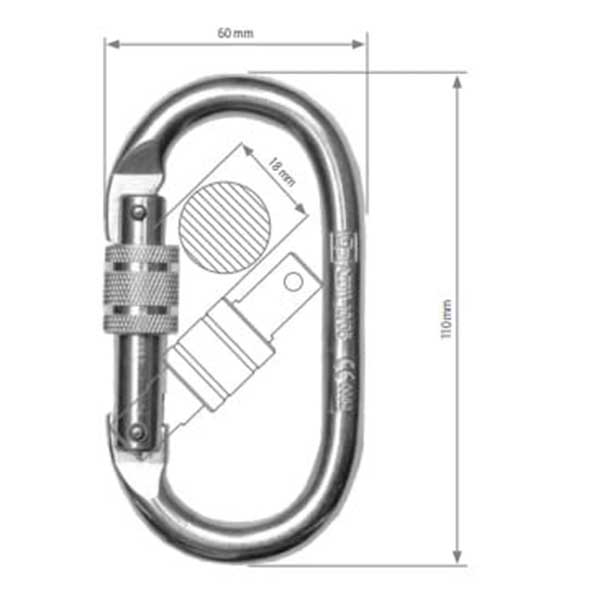If you’re looking to embark on an exhilarating journey of aerial acrobatics and fitness, our comprehensive Acro Hoop Buying Guide is here to assist you in selecting the perfect hoop that suits your needs and aspirations. Embark on a captivating journey as we explore the world of aerial hoop and discover the essential factors to consider when choosing the perfect one for you. Whether you’re a beginner or an experienced aerialist, finding the right aerial hoop is crucial for safety, comfort, and optimal performance. In this comprehensive buying guide, we will delve into the key considerations, such as hoop size, materials, rigging options, and more.
Acro Hoop Buying Guide: How To Choose The Right For Me
Can I hang my acro hoop from the ceiling?
Yes, it is possible to hang an acro hoop from the ceiling. However, it’s important to ensure that the ceiling structure is strong enough to support the weight and stress exerted by the aerial hoop and the performer. Here are a few considerations:
- Ceiling Strength: Check if the ceiling is made of a sturdy material such as concrete, metal beams, or solid wood. Avoid suspending the hoop from weak materials like drywall or plasterboard ceilings.
- Ceiling Height: Make sure you have enough vertical space to accommodate the height of the acro hoop, plus additional clearance for safe movement and performing tricks.
- Professional Installation: It’s highly recommended to consult with a professional rigger or a structural engineer who can assess your specific ceiling structure and provide guidance on the appropriate installation method. They can ensure that the hoop is properly secured to the ceiling and minimize any potential risks.
- Rigging Equipment: You will need appropriate rigging equipment such as ceiling mounts, carabiners, and straps to safely suspend the acro hoop from the ceiling. It’s crucial to use high-quality, load-rated equipment designed specifically for aerial rigging.
- Safety Precautions: Always follow safety guidelines and instructions provided by experienced aerialists or instructors. This includes regular equipment inspections, proper use of safety mats, and understanding weight limits and load capacities.
Remember, aerial arts can be physically demanding and require proper training and supervision. It is recommended to seek guidance from qualified instructors who can teach you the necessary techniques and ensure your safety throughout your aerial hoop journey.
Can I install my acro hoop in my garden/yard?
When it comes to installing an aerial hoop in non-standard locations such as hanging it from a tree in your garden or yard, it is crucial to prioritize safety and consult with professionals who specialize in such installations. A geologist or arborist should be contacted to assess the tree’s suitability and structural integrity to ensure that it can support the weight and stress of the aerial hoop.
Alternatively, there are purpose-built structures available in the market designed specifically for outdoor aerial installations. These structures, such as the X-Pole’s A-Frame or a Portable Aerial Rig for Lyra, Silks & Aerial Yoga, offer convenience and ease of setup. They can typically be assembled within a short timeframe of around 10 to 15 minutes. With these structures, you can confidently hang your aerial hoop and start training immediately, knowing that you have a stable and reliable support system in place.
Regardless of the installation method you choose, it is essential to prioritize safety and follow proper guidelines. Seeking professional advice and using specialized equipment designed for aerial arts will help ensure a secure and enjoyable aerial hoop experience in your garden or yard.
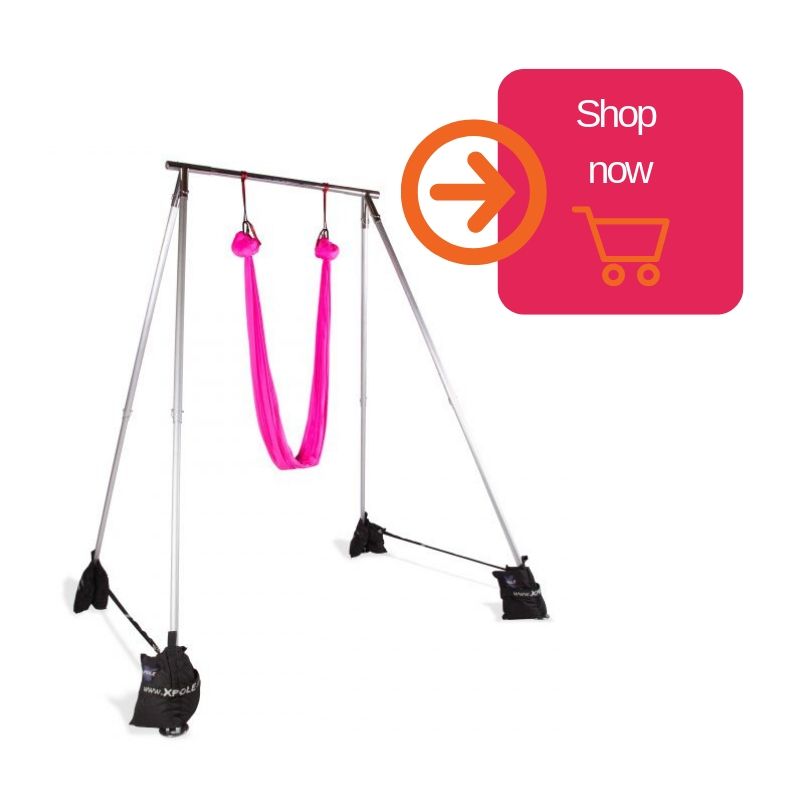
Exclusive Offer: Enjoy a 10% discount on a-frame purchases for our valued readers. Use code ‘FRAME10’ at checkout to claim your savings. Click the image to buy
What is the proper height?
The proper height for an aerial hoop installation can vary depending on several factors, including the height of the performer, the type of tricks and movements you plan to practice, and any safety guidelines or recommendations provided by aerial training professionals or equipment manufacturers.
As a general guideline, the height of the aerial hoop should allow for adequate clearance above the ground to ensure safe and unrestricted movement. For most individuals, a minimum height of 3 meters (10 feet) is often recommended. This provides enough space for various aerial maneuvers without the risk of coming into contact with the ground.
However, it’s important to note that specific disciplines or advanced tricks may require additional height. For example, if you plan to incorporate drops or dynamic movements into your routine, you may need a higher installation point to allow for the necessary clearance and safety margin.
Determine the Appropriate Acro Hoop Size:
Choosing the right hoop size is fundamental for a successful and enjoyable aerial hoop experience. Size refers to the vertical internal diameter of the hoop. But how do you know what size is right for you?
Below we have 3 ways to help you find your size:
- Sit in a chair and measure the distance from the seat to the top of your head. Then add 5.08 cm (2 inches). The sum that is calculated is your size!
- Sit in a chair and put your hand on top of your head to form a fist. The measurement from the top of your hand until the seat is the size that suits you!
- The last type of measurement that has been used by many people in the last 10 years is to measure the length of your foot. Lean forward until your body forms a right angle. The distance from the floor to the waist is the size of the hoop.
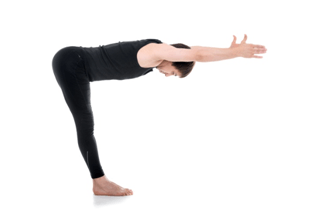
Hot tip: If you do not find your size on the market round the above result always upward!
Hot tip 2: If you are purchasing the aerial hoop for shared use, then a 95-centimeter hoop is the most suitable as it is the most popular size.
Connection points
When installing an aerial hoop, the connection points are crucial for ensuring stability and safety during your training sessions. There are a few options for connecting the hoop, depending on your specific setup and available resources. Consider the following:
Single Point Aerial Hoop
A single-point hoop, also known as a one-point hoop or a single tab hoop, is a variation of the aerial hoop apparatus that features a single attachment point. This type of hoop provides a unique and dynamic experience for aerialists, allowing for increased spinning and rotational movements.
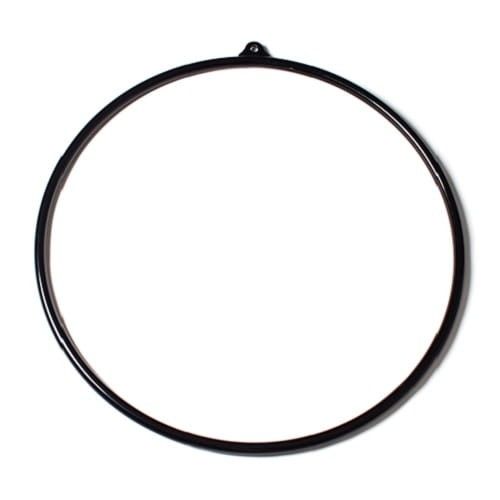
Exclusive Offer: Enjoy a 10% discount on aerial hoop purchases for our valued readers. Use code ‘HOOP10’ at checkout to claim your savings. Click on the image to buy
- Single Point Aerial Hoops will rotate slightly even when rigged without a swivel, if you don’t want your hoop to rotate at all, we suggest a two-point aerial hoop.
- Swings in all directions.
- Is unstable and can be frustrating for some poses.
- Is suitable for installation in smaller spaces.
Double Points Aerial Hoop
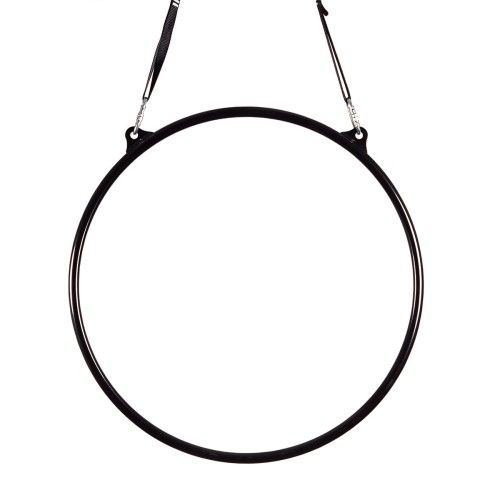
Exclusive Offer: Enjoy a 10% discount on aerial hoop purchases for our valued readers. Use code ‘HOOP10’ at checkout to claim your savings. TUV Certified. Click on the image to buy
- Can rotate around its axis or remain stable, depending on how it will be hung.
- Swings back and forth as swings on playgrounds.
- Are more stable and offer balance to perform difficult movements.
- Because of the two cords, you can practice a larger range of motion over the rim. However, because of installation mode required is more height.
Zero Point Aerial Hoop
This aerial hoop has no attachment points, or in other words, is tabless. Some people like lyras without tabs for aesthetic reasons – you get a nice circle with no bits (rigging points) sticking out from it. However, most people use aerial rings with no attachment points for a combination of aesthetics and rigging reasons.
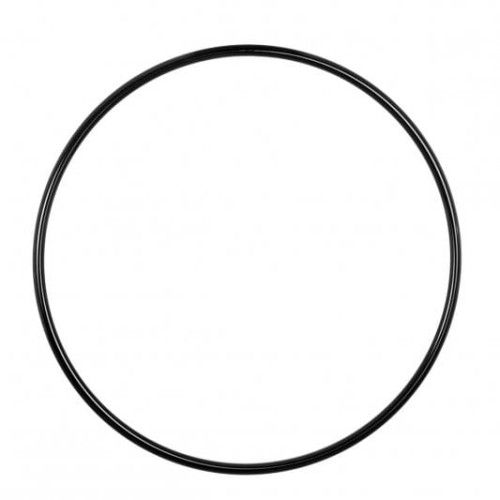
Exclusive Offer: Enjoy a 10% discount on aerial hoop purchases for our valued readers. Use code ‘HOOP10’ at checkout to claim your savings. TUV Certified. Click on the image to buy
- Can be rigged like a one-point or a two-point hoop. This can be useful for people teaching lyra as you can just set up a 0-point hoop differently for each class rather than buying a one-point and a two-point aerial ring.
- Allow you to use a horizontal configuration rather a regular vertical configuration.
Multi-Functional Aerial Hoop: One Point, Double Points, and Zero Point
The Multi-Functional Aerial Hoop is specifically designed for professional aerial dance and aerial acrobatics. It features a special anchoring system without welding which guarantees greater reliability and extreme durability. The 10,5 mm holes drilled directly into the tubing allow the installation both at a single anchorage point and at two points, giving the possibility to choose between 55 and 60 cm of wheelbase. It can be rigged either using our specific stainless steel shackles, which we recommend use since they are specifically designed for this product, or directly to a polyester truck loop.
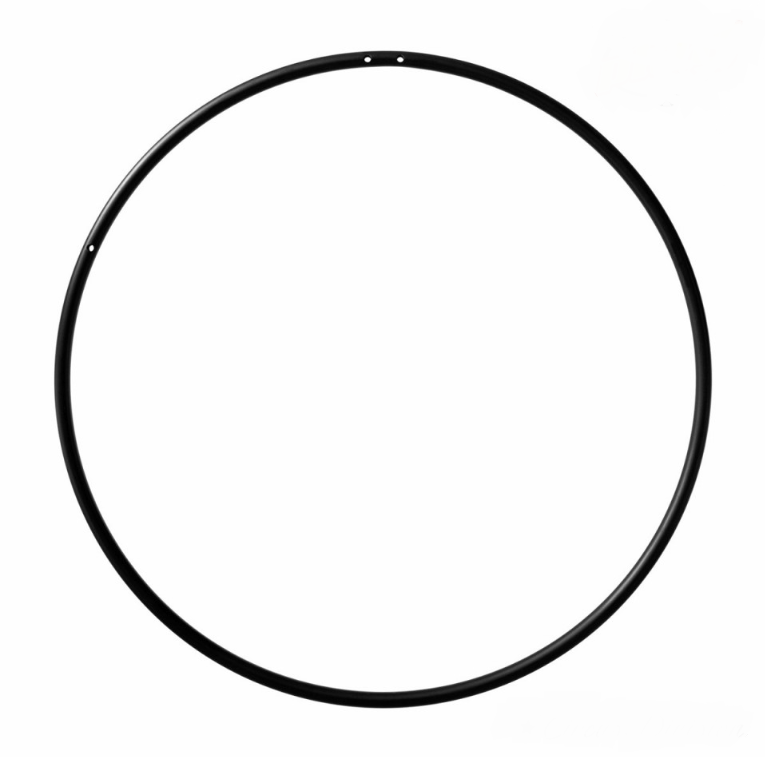
Exclusive Offer: Enjoy a 10% discount on aerial hoop purchases for our valued readers. Use code ‘HOOP10’ at checkout to claim your savings. Click on the image to buy
Additional equipment
Hand loop straps
They are used for a variety of different purposes, you can use them for strength training, and wrist conditioning. Add them to your aerial hoop by either choking or attaching them with a carabiner to give you a wider versatility of moves. This allows you to hang directly in the centre of a 1-point hoop, lean further out than you would normally be able to, and even do foot hangs!
Adhesive Tape
Aerial hoops are typically coated with a special adhesive tape that serves multiple purposes. Firstly, the tape enhances grip, providing a secure hold for performers during their routines. Secondly, it helps maintain hygiene standards by creating a barrier between the hoop and the user’s skin.
When it comes to the tape, you have the option to either wrap the hoop yourself or seek assistance from your provider. If you choose to wrap it yourself, ensure that you follow proper techniques and guidelines to achieve an even and secure application. If the tape needs replacement due to wear or damage, it’s important to thoroughly remove any remnants of glue before reapplying the new tape. This ensures a clean surface and promotes better adhesion.
Taking care of the tape on your aerial hoop will contribute to a safer and more enjoyable training experience, as well as help prolong the lifespan of the hoop itself.
Acro Hoop Rigging Accessories
In addition to the aerial hoop itself, there are several other equipment items you’ll need for a complete setup. These include essential components like strops and carabiners, which are used to hang the hoop securely. It’s crucial to ensure that these components are of high quality and suitable for aerial use, as they play a vital role in maintaining safety during your training sessions.
Swivel
If you want the hoop to rotate, then you will need a swivel. Caution! If you use a swivel, you will need a second carabiner.

Carabiner
Anchor Plate for ceiling
An anchor plate for the ceiling is a hardware component used in aerial rigging systems to secure and support aerial equipment such as aerial hoops, silks, or hammocks. It serves as a connection point between the rigging apparatus and the ceiling structure, providing stability and safety during aerial activities.
Here are some key points to consider when using an anchor plate for ceiling rigging:
- Material and Strength: The anchor plate should be made of high-quality, load-rated material such as steel or aluminum. It should have sufficient strength to withstand the weight and forces applied during aerial movements.
- Attachment Points: An anchor plate typically features multiple attachment points, usually in the form of pre-drilled holes or eyelets. These attachment points allow for secure connections between the anchor plate and the rigging hardware, such as carabiners or swivels.
- Installation: Proper installation of the anchor plate is crucial for safety. It should be securely fastened to a structurally sound part of the ceiling, such as a ceiling joist or beam. It is recommended to consult a professional rigger or engineer for the installation process to ensure it is done correctly and safely.
- Weight Capacity: The anchor plate should have a specified weight capacity that matches or exceeds the anticipated loads it will bear. It’s important to consider not only the weight of the aerial equipment but also the weight of the performer and any dynamic forces generated during movements.
- Regular Inspections: Regularly inspect the anchor plate for signs of wear, corrosion, or any damage that could compromise its integrity. If any issues are identified, the anchor plate should be replaced or repaired promptly.
- Compliance with Standards: Ensure that the anchor plate meets relevant safety standards and regulations for aerial rigging. It’s advisable to use equipment that is designed and manufactured by reputable companies and has been tested and certified for aerial applications.
Always prioritize safety when using aerial equipment. It is recommended to work with a qualified rigger or engineer who can provide guidance on proper rigging techniques, equipment selection, and maintenance practices.
Another important consideration is the protective mattress or padding that you’ll place underneath the hoop. This provides a cushioned surface to minimize the impact in case of falls or slips during your aerial practice. The choice of mattress or padding depends on factors such as the height of your setup and the type of flooring you have.
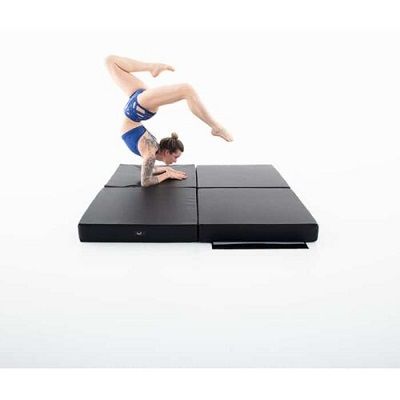
To make informed decisions about the additional equipment needed, it’s advisable to have a thorough discussion with your supplier or an experienced professional. They can provide guidance specific to your requirements and help you select the right equipment that ensures both safety and optimal performance during your aerial training.
Remember, investing in high-quality equipment and seeking expert advice will contribute to a more enjoyable and secure aerial training experience.
Conclusion
When choosing an acro hoop, there are several factors to consider that will help you make the right decision. Firstly, think about the practical aspects such as storage and transportation. Consider the size and weight of the hoop to ensure it can be easily stored and transported according to your needs. If you plan on frequently moving or traveling with the hoop, a lightweight design might be more suitable.
Additionally, assess how the weight of the hoop may impact your training or performance. Heavier hoops can provide more stability but may require more strength to maneuver. Lighter hoops, on the other hand, are easier to handle but may be less stable during certain movements. Consider your skill level and training goals when determining the appropriate weight of the hoop.
Lastly, take into account the frequency of use. If you plan on using the hoop regularly, investing in a high-quality, durable hoop is recommended. This will ensure it can withstand the wear and tear of frequent use and maintain its performance over time.
By carefully evaluating these factors, you will be one step closer to selecting the most suitable aerial hoop for your needs and preferences.



